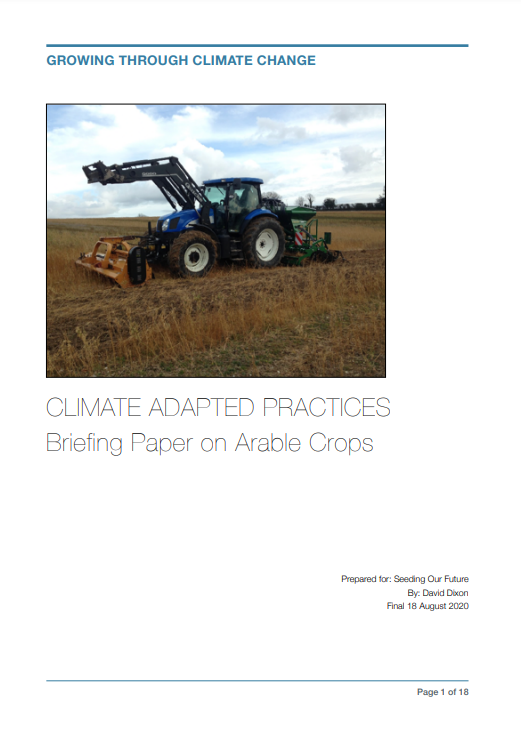Producers
Title image courtesy of Robert Golden
Life continues hard for food producers: climate change, Government policy uncertainties, Covid and more. The good news is that changing climate brings opportunities as well as threats for Dorset producers.
Changes in consumers’ buying habits are needed to support changes by producers: Seeding our Future and Bridport Local Food Group are working to raise consumer understanding of food matters: these may include paying a bit of a premium for local produce, and willingness to add new items to their diet.
Seeding our Future commissioned research on ways to adapt to climate change in South-West England. You can get a free download of the 43-page report here, or a summary here. The report describes future weather trends, and lists a range of adaptive cultivation methods with case examples. It also lists out specific crops and indicates which will become more or less viable in future weather conditions.
The suggestions below are drawn from this report: they are in two sections, for different types of producer.
1. HORTICULTURAL GROWERS
Vegetable and fruit growers have a major opportunity, as this is where the UK is most dependent on imports, and vulnerable to supply disruption. Increasing local production is a priority to strengthen food security: see more in the New Producers section.
Our research offers several recommendations on adaptive cultivation methods, including:
- More rainwater harvesting, to cope with longer drought periods.
- Greater genetic diversity, to protect against increased risk of pests and diseases arising from global warming. Heritage and open pollinated varieties are especially beneficial.
- Intercropping and under-cropping can also raise resilience.
- Improved irrigation methods, including deficit irrigation and tighter scheduling.
- No-dig methods can reduce soil run-off and improve yields, as Charles Dowding has shown.
- More protective cover can reduce impact of extreme weather, for example Polycrubs and Keder greenhouses and caterpillar tunnels.
More details and case examples are given in the Report.
Adaptive crop choices are also detailed in this research, with tables showing the climate-related impacts to specific crops, and adaptive measures. Here’s an example:
| Green bean |
|
|
Changing climate brings scope to innovate with new crops, and these are also listed, such as salsify, apricots and grapes.
 2. ARABLE AND MIXED FARMERS
2. ARABLE AND MIXED FARMERS
Please read our Briefing Paper tailored to arable crop producers. This sums up the relevant parts of our research, including adaptive cultivation methods and crop choices, with case examples.
Climate change brings scope for crop diversification, for example peas and legumes, and processing crops like barley for human use rather than animal feed. Seeding our Future is keen to support such innovations, and will help promote them locally to develop demand. If you’d like to explore this, please contact us.